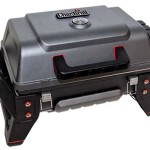Growing Winter Vegetables In Pots: A Guide to Success
Winter gardening may seem like a daunting task, but cultivating vegetables in pots offers a practical solution for those with limited space or challenging climates. By providing the right conditions, you can enjoy a bountiful harvest of fresh produce throughout the cooler months.
1. Choosing the Right Varieties:
Not all vegetables thrive in winter conditions. Opt for cold-hardy varieties such as kale, spinach, carrots, radishes, and broccoli. These plants can withstand temperatures dipping below freezing and will continue to produce until the end of the season.
2. Selecting Suitable Pots:
Choose containers with ample drainage holes to prevent waterlogging. Terracotta pots are porous and allow excess moisture to evaporate, while plastic pots retain moisture better. The size of the pot should correspond to the root system of the vegetable. As a general rule, 6-8 inches deep is sufficient for most leafy vegetables, while root vegetables like carrots may require deeper pots.
3. Preparing the Soil:
Fill the pots with a well-draining potting mix that is rich in organic matter. Amend it with compost or manure to provide essential nutrients. The ideal pH level for winter vegetables ranges from 6.0 to 6.8.
4. Planting and Spacing:
Sow seeds according to the spacing and depth recommendations on the seed packet. Overcrowding can lead to poor growth and susceptibility to disease. Thin out seedlings as they emerge to ensure proper spacing.
5. Watering and Fertilizing:
Water your plants regularly, especially during dry spells. However, avoid overwatering, as it can lead to root rot. Fertilize your plants every few weeks with a balanced fertilizer to maintain their health and productivity.
6. Protection from Cold:
In areas with severe winters, protect your plants from frost and cold temperatures. Cover them with row covers or cloches, or move the pots to a sheltered location. Mulch around the plants with straw or compost to insulate the soil and retain moisture.
7. Harvesting and Storage:
Harvest vegetables when they reach maturity. Remove any diseased or damaged leaves. Store them in a cool, dark place for extended shelf life. Some vegetables, like carrots and parsnips, can be left in the ground over winter and harvested as needed.
Growing winter vegetables in pots offers a rewarding experience that can extend your gardening season and provide you with fresh, nutritious produce throughout the colder months. By following these essential tips, you can create a flourishing winter garden in the comfort of your own home.

You Can Grow Winter Vegetables In Containers

4 Hearty Winter Vegetables To Grow In Pots And How Do It Right

10 Easy Vegetables To Grow In Pots This Winter Your Garden

4 Hearty Winter Vegetables To Grow In Pots And How Do It Right
Vegetables In Containers Rhs Gardening

10 Hardy Winter Vegetables You Can Grow In Pots Seeds N Such

Grow Like Me 10 Winter Vegetables In Pots Sow September October

How To Grow Winter Vegetables Daltons

20 Best Vegetables For Container Gardening Growing In The Garden

The Best 11 Vegetables To Grow In Pots And Containers Gardener S Path








